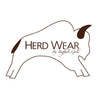With thanks and acknowledgment to our friends at Orvis (this is a cut and paste from their site), here is the "how" and "why" of the name Chukka boot:
What is a chukka boot?
The three most important identifying features of a men’s chukka are their ankle height, thin sole, and the absence of a lining. Variations in chukka boots include different lacing systems, panels, details, and materials, but pretty much every chukka you’ll find will share those three features. Chukka uppers are most commonly made from a soft supple leather (like our American tanned bison), calfskin or suede, but these men’s boots also come in a variety of leathers, canvas, or even synthetics. You can also find men’s chukkas with a variety of sole options, while the most common (and classic) is leather.
Where does the chukka get its name?
Anyone familiar with polo knows that a chukka (or chukker) is the seven-minute, thirty-second, playing period. There are six chukkas in a match. Being linked to riding, chukka boots are sometimes confused with the jodhpur boot, which is a bit higher and has a leather ankle strap and buckle. But insofar as the chukka boot’s history, how the name of a polo period influenced the chukka boot style is up for debate. Whether the players wore them after the match, or calling the boots chukkas was simply an attempt to associate them with the popular sport, the name stuck and today the chukka boot is one of the more popular casual and formal boot styles.
Are chukkas the same as desert boots?
Technically the desert boot is a variation on the chukka, but with a set of features that always defines this “subspecies:” not all chukka boots are desert boots, but all desert boots are chukka boots. Originally created by the C & J Clark Company , the desert boot was designed following Nathan Clark’s service as an infantryman in Africa during the Western Desert Campaign in WWII. The boots the South African soldiers wore were failing in the desert conditions, so a new, lightweight, grippy boot was created to help them maneuver more easily in the hot sand. These “desert boots” featured an airy suede upper, but their most distinguishing feature was a crepe rubber sole. Clark saw this design and brought it home to his family’s shoe company in the UK after the war, subsequently unveiling the desert boot in America at the 1950 Chicago Shoe Fair. Thence to the beatnik generation and London’s mod subculture—and the rest is history. These days the desert boot makes an admirable stand-in for a pair of sneakers, owing to its house slipper-like comfort and casual good looks.
Chukka Boots vs. Chelsea Boots
The Chelsea is an older boot style than the chukka, most likely named for King’s Road in the Chelsea area of London. It dates to the Victorian era, when the queen’s personal shoemaker, J. Sparkes-Hall, designed the first Chelsea boot. The style persisted through the decades but enjoyed widespread appeal starting in the 1960s, thanks once again to London’s mod generation, and owing to the Chelsea boot’s status as the preferred footwear of celebrities—including the Beatles and the Rolling Stones.
The Chelsea is an ankle-height boot like the chukka, similar to a jodhpur boot but without the ankle strap. Like the chukka, the Chelsea also comes in suede and leather varieties, but is more typically suede. And significantly, instead of the chukka’s eyelets and laces, the Chelsea instead has elastic panels, or gores, that allow the wearer to slip the boot on and off, often made easier with a fabric tab at the back of the boot.
How to Wear Men’s Chukka Boots
One of the style benefits of the chukka boot is its versatility. Two of its key features —the thin sole and absence of a lining—make it a men’s boot appropriate for just about any occasion. The options for tailored or casual wear are plentiful, with variations on the uppers and detailing like eyelets and laces. Take a look at this season’s collection of chukka boots for an overview of the options available in these ankle-height men’s boots.
Can you wear chukka boots with jeans?
Yes! Here’s how: on the weekend or for a casual night out, wear chukkas with your favorite denims, cords, or cotton twill trousers, and a button-down Oxford or polo shirt. Finish your outfit with a V-neck pullover, quarter zip, or blazer, as the situation or weather demands. Your desert boots in particular work well with jeans: for a Saturday look that’s as happy to loaf around at home as it is for errands in town, pair your jeans with a buffalo check shirt pulled on over a tee, and then lace up your chukkas.
Can you wear chukka boots with a suit?
Yes. Boots of all stripes are becoming more acceptable these days as appropriate men’s footwear with suits, especially in cooler weather. Daniel Craig pulled off this look as Agent 007 in Skyfall—and after all, if it’s good enough for James Bond…. But depending on which chukka boot is in your closet, its close cousin, the slightly-more-elegant Chelsea boot, may make a better choice for a suit. Try a grey suit and a light blue shirt with a pair of brown chukkas. With a dark suit, a dark chukka looks polished and refined, while a light suit can easily be paired with a light-colored suede chukka for a handsomely cool, formal summer wardrobe.

